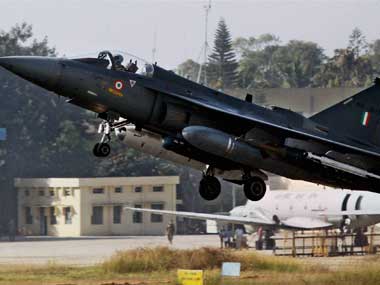The Indian Air Force (IAF) is all set to raise the first squadron of the indigenous light combat aircraft (LCA) Tejas on 1 July.
The first LCA squadron will be based in Bangalore for two years and then will be shifted to Sulur in Tamil Nadu. State-run Hindustan Aeronautics Limited-Aeronautical Development Agency will hand over the first two Tejas aircraft to the IAF on 1 July.
Given the moniker of ‘Flying Daggers 45’, LCA is considered superior to Pakistan’s JF-17 built jointly with China, according to the IAF. “It is better than JF-17, since it is mostly made of composite which makes it light and very agile. It also comes with smart ammunition and bombs which help it to hit targets in a precise manner,” a source said.
The Tejas may not be combat ready yet, but it will be a historic moment for a country which imports over 65 per cent of its military hardware and software, reported The Times of India . These fighter jets, however, are expected to get into combat role next year, said some officials.
Sources also said that Tejas will replace the MiG 21s and will be used for air-to-air fight and ground attack and could also be a compliment to bigger fighter planes such as Su 30 MKI.
“During its 3,000 hours of sorties in the development phase, the LCA registered more than 2,500 hours of exceptionally clean flights,” IANS quoted an IAF official as saying.
The first Tejas squadron will consist of 20 airplanes in total, with four in reserve. The IAF plans on inducting 20 LAC under the “Initial Operational Clearance” and 20 more would be inducted at a later stage.
Impact Shorts
More ShortsThe IAF also wants to induct over 80 Tejas 1A, which are airplanes with better specifications. They will have improved capabilities, including critical necessity of missile firing to Beyond Visual Range. It will also have specifications like mid-air refueling, modern internal radar warning receiver and external self-protection jammer pod to enhance survivability and an active electronically scanned array radar.
The IAF sources said that Tejas is also equipped with helmet-mounted display and fly-by-wire, a semi-automatic and computer-regulated system for controlling the flight of an aircraft or spacecraft which makes it a 4.5 generation plane.
The idea of have an indigenous fighter aircraft was conceptualised in 1970s, the work started only in 1983.
Here’s a look at how the developments have taken place over the years.
With inputs from agencies.
)